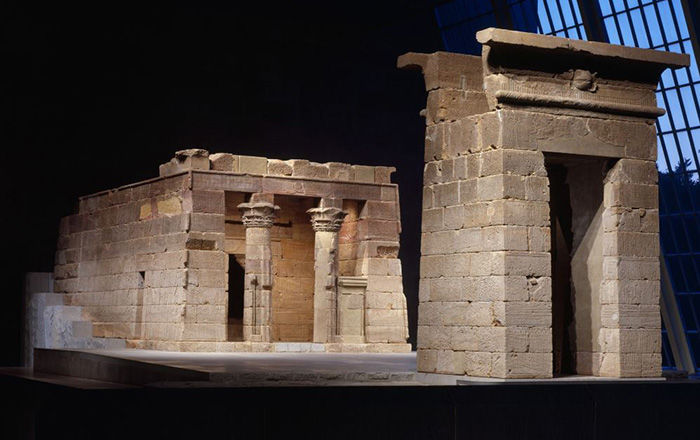Bastet
Late Period–Ptolemaic Period
Bastet, here shown as a cat-headed goddess, was a powerful protective figure who also was known for her fertility. She could be represented with a lion head as well, but as a cat-headed goddess her peaceful traits were emphasized. Her personal adornments and garments are elaborate on statuettes, often more so than other goddesses, and she usually carries numerous attributes. This figure likely once held at least two separately-attached attributes, probably an aegis against her chest and a sistrum in her other hand. Her dress has an elaborate striped pattern with alternating dotted and lined bands. Bastet does not always wear a decorated dress, but it is much more common for her than for other goddesses. The patterning highlights its craftsmanship and quality; also, as some have suggested, the vertical banding may recall the striped fur of a cat.
Great attention to detail and color was lavished on this figure. Inlays are still visible in Bastet’s eyes, and alternating rows of precious metal and black bronze inlay form her broad collar. Also special to this piece is the base; rather than an inscription or blank register, as on most statuettes, this base bears a pattern of repeated lotus blossoms and buds.
Bastet’s main cult center was at Bubastis in the Delta, where thousands of cat mummies and a large number of cat statuettes were discovered. Her cult extended far beyond Bubastis, however, and statuettes of this goddess, as a cat or cat-headed, were among some of the most popular dedications of the Late and Ptolemaic Periods.
This image cannot be enlarged, viewed at full screen, or downloaded.
This artwork is meant to be viewed from right to left. Scroll left to view more.



